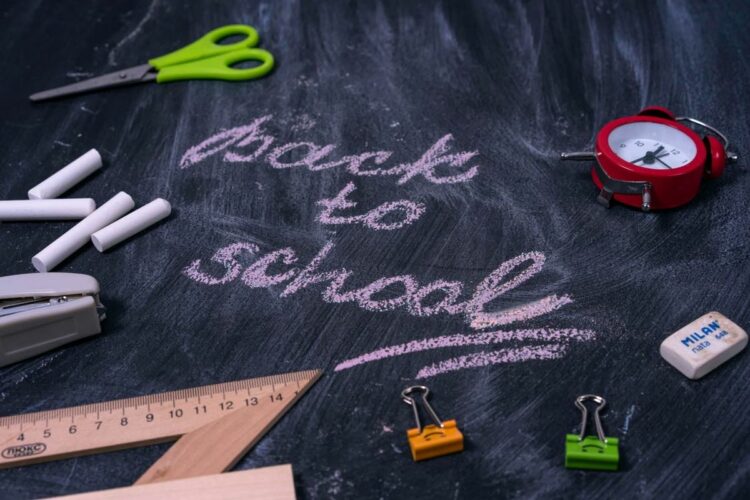Back to School Advice for Teachers
By Laura McMullin, PhD and Taylor Rutigliano

It has been a whirlwind of a year for educators. You have been on the frontline during a pandemic, adjusting to profound changes in your teaching online and all the challenges that has brought. Now with schools opening, another major transition is underway as students return to either to in-person or hybrid learning. In this article, we share a few suggestions to support a smooth transition.
Be intentional.
We all have gone through a lot during the pandemic and students have had a range of experiences, some of which may have been very difficult for them. The most important thing we can do as we transition back to in-person school is to be intentional about creating a safe and nurturing environment where relationship-building among students and staff is a priority. Tending to everyone’s social emotional wellbeing is the foundation for productive learning.
Cultivate wellbeing.
Cultivating your own wellbeing and the wellbeing of your students is essential during challenging times as well as during calm times. There are a number of strategiesyou can use on your own, with your students, and with colleagues to build positive relationships and navigate challenges together.
Address student anxiety.
The past year has brought a lot of change for everyone, and students will be experiencing a range of feelings related to returning to school in person. While some might be excited and happy to return, others might feel strange and nervous. Equip yourself with evidence-based knowledge about recognizing and addressing student anxiety to support all of the students in your classroom, especially ones experiencing some anxiety. Take our course “Recognizing and Managing Anxiety in the Classroom” to learn age-appropriate advice for varying levels of student stress and anxiety.
Check in with students.
In general, and especially as students return back to campus, it can be really supportive to have regular check-ins to see how students are doing on a personal level. One simple tool you can use in your classroom is the Feeling Thermometer, which you can learn about in this short demonstration.
Practice staying grounded.
To help students (and yourself) feel more centered and grounded throughout the day, you can try a simple grounding practice or Progressive Muscle Relaxation. Grounding can help your class transition into learning spaces or can be done with individual students if they are feeling stressed or anxious. Of course, you can also take a moment to center yourself as needed to better help you support your students.
You also may be familiar with mindfulness practices like Mindful Breathing. It can be so helpful to take a moment to pause throughout the day and breathe with your students. Mindfulness practices have proven to help reduce stress and anxiety while enhancing wellbeing and focus. Doing amindfulness practice in the morning or after a transition like recess or lunch can be a wonderful way to come together as a class and get ready for learning.
Nurture relationships.
Since we have been learning online for so long, re-adjusting to new or different social dynamics will affect everyone. Engaging in activities where you can build and nurture relationships with students and among colleagues will be really important. Provide your class with important reminders about Effective Communication and “I” Statements.
Be patient.
It will be equally important to consider that depending on a student’s online learning experience last year, academically everyone may be in different places. It may take time to get up to speed with grade-level expectations, and some students will need additional support. Students will be balancing their excitement of seeing friends with the academic demands of school, which for some might feel overwhelming at times. So keep in mind that it will take time for them to adjust to all the shifting dynamics and expectations. Patience, compassion, and flexibility will be the most supportive tools for both you and your students.
As with all the new challenges of the last year, a collaborative approach will be best when returning to in-person learning. “We are all in this together” is a wonderful reminder as both you and your students adjust to returning to the classroom.
Hopefully the strategies in this article can support you and your students with a smooth transition back to campus. We hope you take very good care of yourself as you do your best navigating back. As an educator, you are definitely among the superheroes of our time.